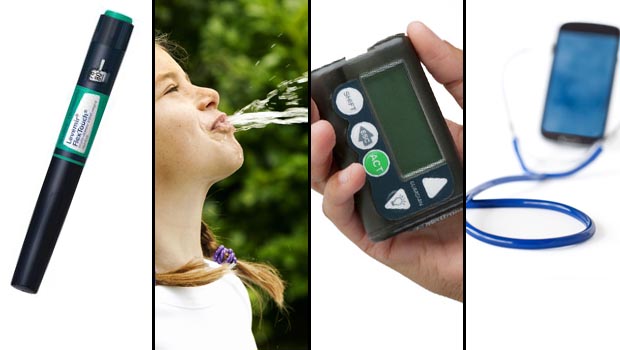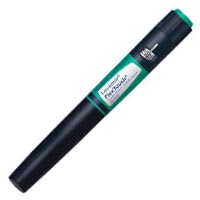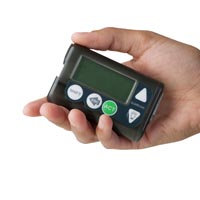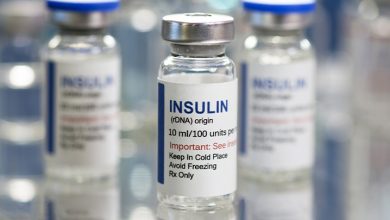Easier Pens, Laser CGMs, & Remote Monitoring

Easier Pen Dosing
 Novo Nordisk is officially rolling out its Levemir FlexTouch, an insulin pen which they believe will make dosing easier. The drug company thinks the FlexTouch will be a better mousetrap because its dosing push button doesn’t extend. In theory, this means it would require the same amount of force to dial up a large dose of insulin as it would a small dose. If the FlexTouch takes hold, this should give Novo Nordisk a leg up on trying to entice older people with diabetes or those with diabetes and other health issues to give pens a try.
Novo Nordisk is officially rolling out its Levemir FlexTouch, an insulin pen which they believe will make dosing easier. The drug company thinks the FlexTouch will be a better mousetrap because its dosing push button doesn’t extend. In theory, this means it would require the same amount of force to dial up a large dose of insulin as it would a small dose. If the FlexTouch takes hold, this should give Novo Nordisk a leg up on trying to entice older people with diabetes or those with diabetes and other health issues to give pens a try.
Lasers as CGMs
Researchers in the Netherlands and Israel have unveiled a wearable monitor that uses lasers to track glucose levels. According to a report in ThomasNet News, the watch-like device creates a wavelength of light on a patch of skin near an artery, and tiny cameras record changing patterns of that light in response to fluctuating glucose. This isn’t the first time non-invasive glucose monitoring has been tried, and as always the devil is in the accuracy. Right now, the device gets within 15% deviation from a standard glucose monitoring device, and that needs to improve if lasers are to become the new continuous glucose monitor.
Now, Spit!
 Brown University researchers say they have discovered a way to use saliva to detect glucose levels, according to a report in medGadget. For the device, the researchers combined a tiny sensor that combines a chemical compound-detecting light with a dye that can mark glucose levels. As is the case with laser monitoring, the key will be what level of accuracy the saliva glucose device can achieve.
Brown University researchers say they have discovered a way to use saliva to detect glucose levels, according to a report in medGadget. For the device, the researchers combined a tiny sensor that combines a chemical compound-detecting light with a dye that can mark glucose levels. As is the case with laser monitoring, the key will be what level of accuracy the saliva glucose device can achieve.
Pumps and Taxes
Medtronic, one of the leading manufacturers of insulin pumps, has drawn scrutiny from the media for its move to merge with an Irish medical company, Covidien. According to a NPR report, critics contend the move is a way to steer profits away from U.S. tax liability through a merger process known as “inversion”. Essentially, inversion is when a bigger U.S. company merges with a smaller foreign company to move headquarters, and profits, overseas, according to the report. Medtronic Chairman Omar Ishrak contends the move will make the company more competitive.
Pumps Take 2
 There are many studies showing people with Type 1 diabetes get better A1C control on pump therapy, but what about pumps for the Type 2 crowd? A Medtronic-funded study found that people with Type 2 diabetes on pump therapy experienced A1C improvement of 0.7% over peers using multiple daily injections. The pump users were able to enjoy the improvement without experiencing hypoglycemia or ketoacidosis, according to a report in Fierce Medical Devices. Trial results were first published in The Lancet.
There are many studies showing people with Type 1 diabetes get better A1C control on pump therapy, but what about pumps for the Type 2 crowd? A Medtronic-funded study found that people with Type 2 diabetes on pump therapy experienced A1C improvement of 0.7% over peers using multiple daily injections. The pump users were able to enjoy the improvement without experiencing hypoglycemia or ketoacidosis, according to a report in Fierce Medical Devices. Trial results were first published in The Lancet.
Pumping Up Disposable Pumps
Valeritas is raising some $45 million to roll out its temporary insulin pump, the V-Go, according to Fierce Medical Devices. This pump is designed primarily for people with Type 2 diabetes to be used for 24 hours and then discarded. The FDA approved this little device back in 2010, but parent company Valeritas is still raising money for it to hit the market, which goes to show that market forces play as much a part as regulation in the timing of when a new diabetes therapy hits the market.
Connected to Your Doctor
 There are now some 3 million people being monitored remotely for medical conditions away from hospital and nursing home settings, according to a report by Berg Insight. As reported by MedCity News, analysts believe that number is going to jump to 19 million in just four years. That number seems right on the money with news that Apple is focusing on the internet of medical devices. If you think that 19 million is likely to include people with diabetes, give yourself a prize.
There are now some 3 million people being monitored remotely for medical conditions away from hospital and nursing home settings, according to a report by Berg Insight. As reported by MedCity News, analysts believe that number is going to jump to 19 million in just four years. That number seems right on the money with news that Apple is focusing on the internet of medical devices. If you think that 19 million is likely to include people with diabetes, give yourself a prize.
Thanks for reading this Insulin Nation article. Want more Type 1 news? Subscribe here.
Have Type 2 diabetes or know someone who does? Try Type 2 Nation, our sister publication.







